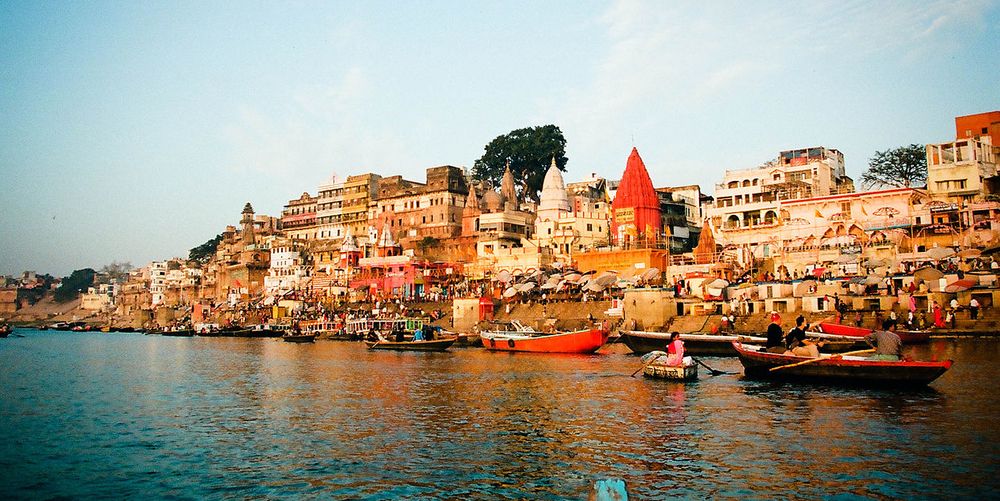Kashi Goes Green: India’s First Hydrogen Water Taxis Set Sail
India is taking a bold step toward sustainable urban mobility with the launch of its first hydrogen-powered water taxis in Kashi (Varanasi). Set to launch on December 4, it will be flagged off by Union Minister Sarbananda Sonowal from Namo Ghat. These eco-friendly water taxis mark a historic moment in the country’s efforts to develop pollution-free, innovative transportation solutions. The initiative not only represents a technological breakthrough but also enhances the travel experience for tourists and devotees along the sacred Ganges River.Hydrogen-Powered Innovation on the GangesThe newly introduced water taxis operate on hydrogen fuel cells, making them completely zero-emission vehicles. Unlike conventional diesel or petrol-powered boats, these taxis produce no harmful gases, significantly reducing air pollution and contributing to cleaner waterways. Passengers can enjoy quiet and smooth rides while admiring the ghats, temples, and cultural landmarks of Kashi. The hydrogen water taxis reflect a growing global trend of adopting green energy solutions in urban transport, placing India at the forefront of sustainable mobility initiatives.A Solution for Kashi’s Congested StreetsThe Kashi Vishwanath Corridor has brought a surge of visitors to the city, creating immense pressure on roads and traditional transport systems. The introduction of hydrogen water taxis offers an alternative route for tourists and pilgrims, helping to decongest streets while promoting the use of the city’s natural waterways. By shifting a portion of traffic to the Ganges, these taxis will enhance the overall travel experience and make commuting in the city more environmentally responsible. The move is expected to complement broader city planning efforts aimed at sustainable and efficient urban transport.Manufactured in India, for IndiaThese water taxis are manufactured in Cochin Shipyard Limited (CSL), under the ‘Make in India’ initiative, highlighting the country’s growing capabilities in advanced green technology. By producing hydrogen-powered vehicles domestically, India not only strengthens its industrial and technological base but also demonstrates self-reliance in innovative solutions. The project aligns with national efforts to reduce carbon footprints and promote clean energy adoption, providing a replicable model for other river cities across the country.Passenger Experience: A Unique Perspective of KashiBeyond their technological significance, the hydrogen water taxis promise a distinctive cultural and spiritual experience for passengers. As the boats glide silently along the Ganges, travelers can take in panoramic views of Kashi’s ancient ghats, temples, and bustling riverfront. For devotees, the rides offer a serene opportunity for reflection and connection with the sacred river, while tourists gain an eco-conscious way to explore the city. The initiative combines environmental responsibility with cultural tourism, creating a harmonious blend of technology and tradition.Towards a Cleaner, Greener FutureThe hydrogen water taxis are more than just a transport solution; they are a statement about India’s commitment to sustainable infrastructure. As cities grapple with rising pollution, traffic congestion, and climate change, such initiatives demonstrate how green technology can be integrated into everyday urban life. Kashi’s project may inspire similar solutions in other riverine cities, promoting the use of hydrogen-powered vehicles and highlighting the potential of renewable energy in public transportation. For the citizens of Kashi, the hydrogen water taxis are a source of pride. The initiative not only makes daily commuting cleaner and safer but also showcases India’s capability to combine heritage with innovation. Devotees and tourists alike will experience a modern mode of transport while connecting with centuries-old traditions along the Ganges. The project inspires young innovators and environmentalists, illustrating that technology can preserve culture, protect nature, and improve human experience simultaneously.Setting a Model for the NationIndia’s first hydrogen water taxis represent a larger vision for sustainable mobility across the country. By demonstrating that large-scale transport systems can be both eco-friendly and efficient, the initiative sets a benchmark for cities looking to reduce emissions and leverage waterways for transport. The project exemplifies a holistic approach to urban planning, integrating green technology, cultural preservation, and human-centered design. As other river cities observe Kashi’s success, hydrogen water taxis could become a standard for eco-conscious urban mobility in India.The launch of hydrogen-powered water taxis in Kashi is a pioneering achievement in India’s journey toward sustainable transport and environmental responsibility. Combining innovative technology, cultural heritage, and a vision for cleaner cities, these taxis provide a model for the future. This project is not only a milestone for Kashi but also a hope of possibility for India’s cities and waterways, promising a greener, quieter, and cleaner future.

